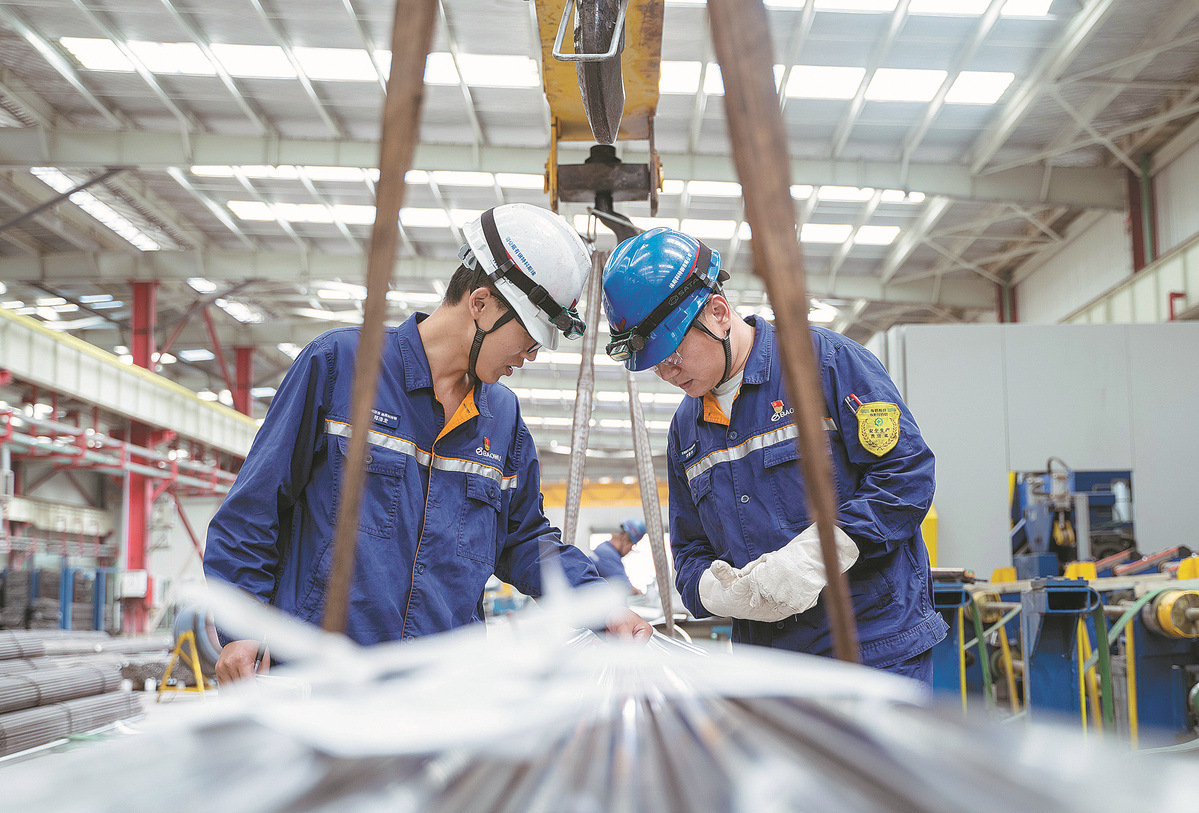
中文


Home

CAE in Media

Detail
Metal sectors focus on tech innovation
- Published: Dec 13, 2022
- Source: ChinaDaily
- Font size: BigMediumSmall

Low-carbon efforts urged to accelerate productivity, high-quality development
China's iron and steel industry needs to step up efforts on technological innovation and low-carbon development to cope with challenges and realize high-quality growth, according to industry experts.
The remarks were made at an online forum on the development of China's iron and steel industry on Saturday, which was held by several organizations including the Chinese Society for Metals and the China Metallurgical Industry Planning and Research Institute.
"The iron and steel industry is currently facing new challenges and must rely on scientific and technological innovation to take an intensive growth pathway featuring an increase in total factor productivity to realize high-quality development," said Zhang Xiaogang, chairman of the CSM and former president of the International Organization for Standardization.
He said Chinese steelmakers need to enhance their operations and raise core competitiveness through strengthening cost control, and benchmarking to tap their potential and improve performance with precise goals.
Data from the National Bureau of Statistics showed the revenue of China's ferrous metal smelting and rolling processing industry in the first 10 months was 7.3 trillion yuan ($1 trillion), down 9.7 percent from a year ago, while the industry's profits plummeted 92.7 percent year-on-year to 29.68 billion yuan during the period.
Experts said the plunge in profits is mainly attributable to the COVID-19 pandemic and the complexities of macroeconomic conditions, due to which enterprises are faced with sluggish demand, low product prices and high-level raw materials costs.
According to the China Iron and Steel Association, key iron and steel enterprises' purchase costs of coking coal increased more than 50 percent year-on-year during the first three quarters, while the costs of injection coal increased more than 40 percent on a yearly basis.
While the costs of importing iron ore in the first three quarters declined year-on-year, it was still higher compared with the costs in the same period in 2019 and 2020.
Amid soft demand and high-level prices of raw materials, crude steel output during the first 10 months declined 2.2 percent, the NBS statistics showed.
Diao Li, deputy head of the finance and assets department of the CISA, said prices of coal and coking coal had increased by the end of November, leading to more cost pressure on iron and steel enterprises.
According to Gan Yong, an academician at the Chinese Academy of Engineering, to address the multiple challenges it faces, China's iron and steel industry needs to focus on the key links of the industrial chain to propel high-quality development.
The industry needs to further phase out outdated capacity, strengthen the construction of smart systems to make good use of digital transformation and promote short-process steelmaking technologies like electric furnace steelmaking, Gan said, who is also honorary chairman of the CSM and former deputy head of the Chinese Academy of Engineering.
He also said the industry needs to advance energy conservation, carbon emission reduction and reform the technical innovation mechanism.
Fan Tiejun, president of the China Metallurgical Industry Planning and Research Institute, said safeguarding supplies of resources and ensuring product quality are the key to the healthy development of the industry.
The industry must adhere to a green, low-carbon and intelligent development pathway while striving for higher-level development comprehensively through technological innovation, mergers and acquisitions, resources and energy recycling, and application of a standard certification system, according to him.
He advised steelmakers to step up efforts to switch from blast furnaces to electric furnaces for steelmaking, strengthen research on and application of carbon capture, utilization and storage technologies, and make more breakthroughs in hydrogen metallurgy and other advanced low-carbon metallurgy technologies, to accelerate the decarbonization of the industry.
He also said enterprises should make better use of smart production and management technologies to reduce costs and improve efficiency.
As enhancing energy consumption efficiency remains a key task for the iron and steel industry to realize high-quality development, the CISA has officially kicked off a three-year campaign in that regard.
He Wenbo, executive chairman of the association, said at the kickoff ceremony held on Friday in Zhanjiang, Guangdong province, that the association aims to facilitate 80 million to 100 million metric tons of steel capacity to reach benchmark standards on excellent energy consumption efficiency performance within 2023.
By 2024, steel capacity with excellent energy consumption efficiency is expected to expand to 150 million to 200 million tons. By 2025, the figure is expected to be 200 million to 300 million tons, he said.




